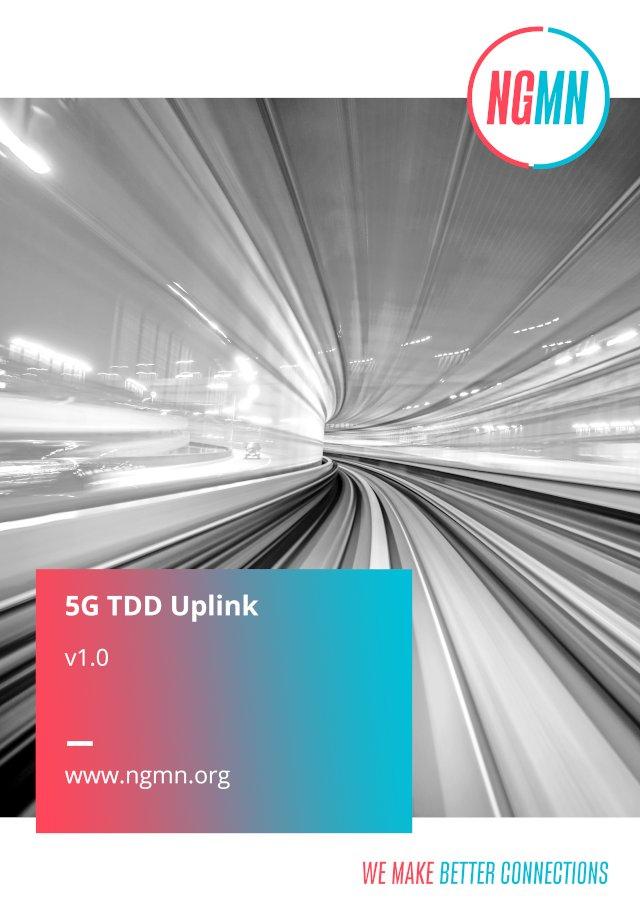
NGMN Calls for the Industry to Support Uplink Performance
Wolfgang Fleischer, Head of Network Innovation Technology & Business Evolution, A1 Group, NGMN Board Member and project lead, says: “Some of the applications for 5G technology, particularly in industrial settings, have greater requirements on the uplink – both in terms of capacity and shorter latency. This NGMN Initiative puts these into the spotlight and presents features to enable the networks to accommodate the requirements for such uplink dependent use cases.”
NGMN’s recommendations to better support the uplink throughput and latency requirements of Verticals include:
- To use different TDD configurations
- To select frame structure to vary uplink/downlink throughput
- To carefully select more balanced or uplink oriented TDD frame structures in a local network
- To consider the adoption of other uplink enhancing features such as SU-MIMO
- To enhance 3GPP specification to fulfil requirements with respect to UL throughput, latency, and support for the co-existence of different frame structures by enhancements
- To reserve spectrum for certain specific usages
The NGMN project will also reach out to chipset makers, regulators, Standard Developing Organisations and other involved parties to ensure that these NGMN recommendations are considered.
Further information and NGMN recommendations:
- A number of verticals’ use cases require significantly higher uplink throughput and lower latency than that required by typical Mobile Broadband consumer mobile users. There are solutions available to address this uplink problem (throughput and latency). Using different TDD configurations, as one of the solutions, requires coordination between operators in order to minimize possible interference and support by regulators in order to achieve sufficient operational flexibility to deliver customer use cases with higher uplink requirements.
- Frame structure selection is an effective way of varying uplink/downlink throughput. Additional balanced or uplink oriented frame structures should be made available and interoperable by ecosystem partners (chipset, user equipment and infrastructure providers). NGMN has identified specific slot formats, DDSUU (balanced) and DSUUU (uplink oriented), as candidates for specific frequency ranges (FR1 and FR2). Ecosystem partners should also support operators in making available and interoperable other possible alternative solutions identified in this White Paper to address this uplink problem.
- Careful selection of more balanced or uplink oriented TDD frame structures in a local network is recommended to limit the interference impact between local and wide-area public networks. However, if isolation between networks is sufficient (through physical separation, indoor with sufficient wall penetration loss, guard bands, etc.), the selection and use of TDD frame structures is less constrained and may be beneficial for services with a more balanced or uplink oriented traffic profile.
- In scenarios where sufficient isolation between networks is not achievable, e.g. local outdoor networks in the same or adjacent spectrum, using different TDD frame structures will be extremely difficult, if not impossible. In such cases, adoption of other uplink enhancing features such as SU-MIMO (Single User Multiple Input Multiple Output) and MU-MIMO (Multi User Multiple Input Multiple Output) should be considered.
- Future 3GPP specification enhancements, including 5G advanced and 6G, should ensure the requirements of verticals’ use cases are fulfilled with respect to UL throughput, latency, and support for the co-existence of different frame structures.
- Spectrum, particularly sub 6 GHz, is a critical and limited resource for mobile communications. Regulators need to carefully consider how it is assigned to ensure it can be used effectively and efficiently. Spectrum fragmentation due to reservation for certain specific usages could undermine the assignments of sufficiently large contiguous frequency blocks for 5G networks, potentially leading to under-utilization and spectrum inefficiency.
The NGMN Alliance (Next Generation Mobile Networks Alliance) is a forum founded by world-leading Mobile Network Operators and open to all Partners in the mobile industry. Its goal is to ensure that next generation network infrastructure, service platforms and devices will meet the requirements of operators and, ultimately, will satisfy end user demand and expectations.
The vision of the NGMN Alliance is to provide impactful industry guidance to achieve innovative, sustainable and affordable mobile telecommunication services for the end user with a particular focus on Mastering the Route to Disaggregation / Operating Disaggregated Networks, Green Future Networks, and 6G, whilst continuing to support 5G’s full implementation.
NGMN seeks to incorporate the views of all interested stakeholders in the telecommunications industry and is open to three categories of participants (NGMN Partners): Mobile Network Operators (Members), vendors, software companies and other industry players (Contributors), as well as research institutes (Advisors).
NGMN Alliance e.V.
Breite Straße 3
40213 Düsseldorf
Telefon: +49 (211) 540596005
Telefax: +49 (69) 9074998-41
http://www.ngmn.org
PR
Telefon: +49 (69) 9074998-20
E-Mail: press@ngmn.org
Telefon: +49 (40) 4011310-10
E-Mail: ngmn@cream-communication.com
![]()





